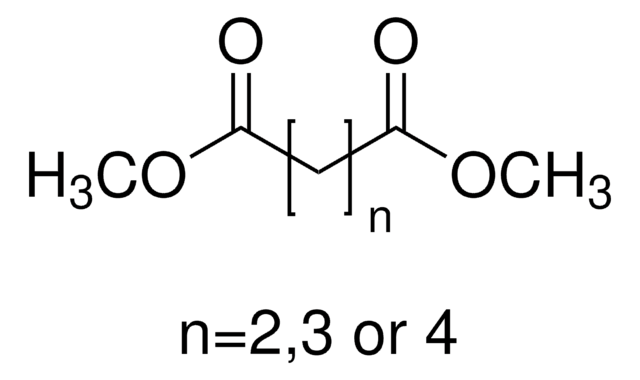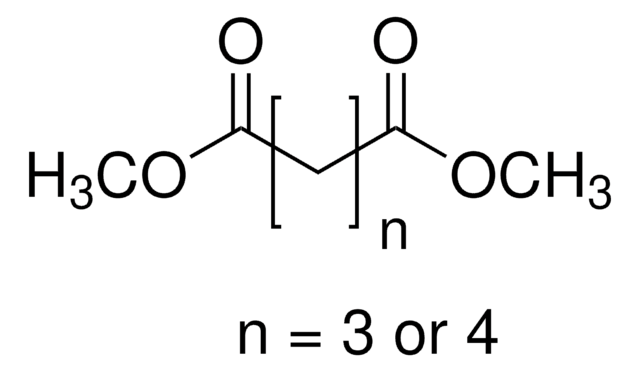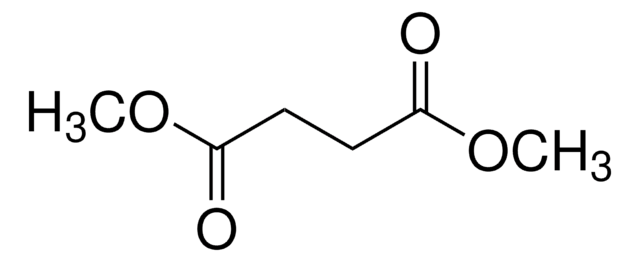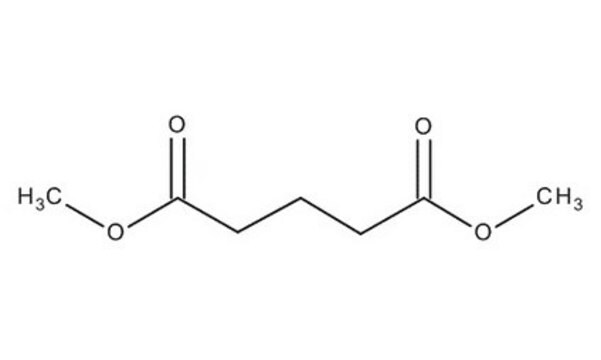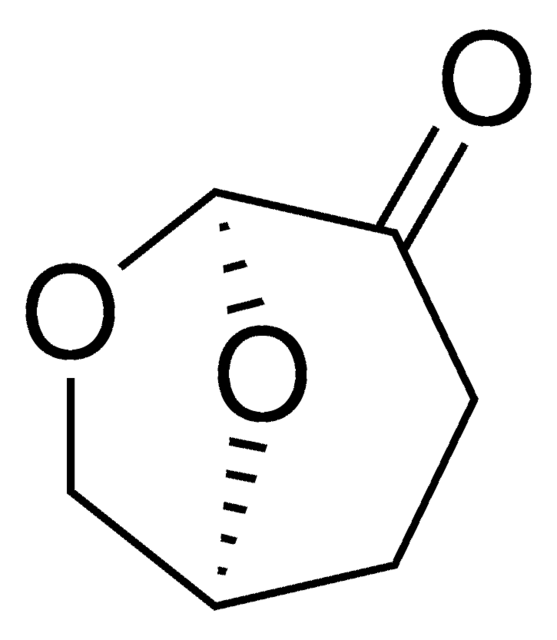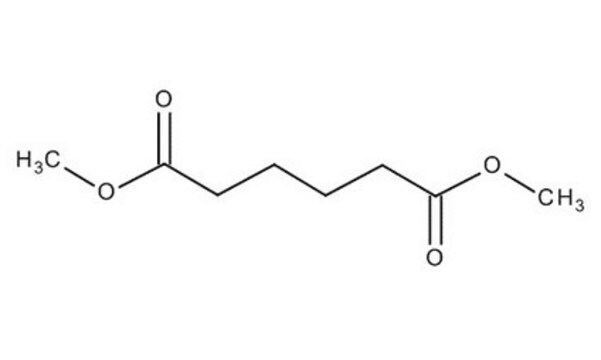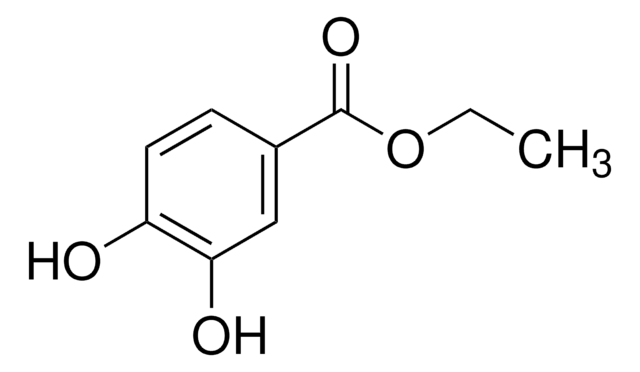112755
DBE-4 dibasic ester
98%
Synonym(s):
Dimethyl succinate, Succinic acid dimethyl ester
Sign Into View Organizational & Contract Pricing
All Photos(3)
About This Item
Linear Formula:
CH3OCOCH2CH2COOCH3
CAS Number:
Molecular Weight:
146.14
Beilstein:
956776
EC Number:
MDL number:
UNSPSC Code:
12352100
PubChem Substance ID:
NACRES:
NA.22
Recommended Products
vapor pressure
0.3 mmHg ( 20 °C)
Quality Level
Assay
98%
autoignition temp.
689 °F
expl. lim.
8.5 %
refractive index
n20/D 1.419 (lit.)
bp
200 °C (lit.)
mp
16-19 °C (lit.)
density
1.117 g/mL at 25 °C (lit.)
SMILES string
COC(=O)CCC(=O)OC
InChI
1S/C6H10O4/c1-9-5(7)3-4-6(8)10-2/h3-4H2,1-2H3
InChI key
MUXOBHXGJLMRAB-UHFFFAOYSA-N
Looking for similar products? Visit Product Comparison Guide
General description
Dimethyl succinate (DBE-4 dibasic ester ) is obtained by the oxidation of 1,4-butanediol and butyrolactone by using supported gold, palladium and gold-palladium nanoparticles.
DBE-4 can be used as an intermediate in the preparation of 1,4-butanediol, γ-butyrolactone, tetrahydrofuran and itaconic acid.
DBE-4 can be used as an intermediate in the preparation of 1,4-butanediol, γ-butyrolactone, tetrahydrofuran and itaconic acid.
Legal Information
DuPont product
Signal Word
Warning
Hazard Statements
Precautionary Statements
Hazard Classifications
Eye Irrit. 2
Storage Class Code
10 - Combustible liquids
WGK
WGK 1
Flash Point(F)
201.2 °F - closed cup
Flash Point(C)
94 °C - closed cup
Personal Protective Equipment
dust mask type N95 (US), Eyeshields, Gloves
Choose from one of the most recent versions:
Already Own This Product?
Find documentation for the products that you have recently purchased in the Document Library.
Customers Also Viewed
Gemma L Brett et al.
ChemSusChem, 6(10), 1952-1958 (2013-10-10)
The oxidation of 1,4-butanediol and butyrolactone have been investigated by using supported gold, palladium and gold-palladium nanoparticles. The products of such reactions are valuable chemical intermediates and, for example, can present a viable pathway for the sustainable production of polymers.
L Ladriere et al.
JPEN. Journal of parenteral and enteral nutrition, 20(4), 251-256 (1996-07-01)
Succinic acid dimethyl ester (SAD) is efficiently metabolized in several cell types as pancreatic islet cells, hepatocytes, and colonocytes. The purpose of this study was to assess the overall nutritional value of SAD in the whole organism. SAD was infused
André Mukala-Nsengu et al.
Biochemical pharmacology, 67(5), 981-988 (2004-04-24)
The relative contribution of glycolysis vs. oxidative metabolism to the stimulus secretion coupling mechanism of beta-cells was investigated in isolated islets. For that purpose, the secretory and intracellular calcium responses of islets to both glucose and succinic acid dimethyl ester
Lili Yang et al.
The Journal of biological chemistry, 283(32), 21978-21987 (2008-06-12)
We conducted a study coupling metabolomics and mass isotopomer analysis of liver gluconeogenesis and citric acid cycle. Rat livers were perfused with lactate or pyruvate +/- aminooxyacetate or mercaptopicolinate in the presence of 40% enriched NaH(13)CO(3). Other livers were perfused
J Cancelas et al.
International journal of molecular medicine, 8(3), 269-271 (2001-08-09)
It was recently proposed that suitable succinic acid esters could be used to potentiate the insulinotropic action of glucagon-like peptide 1 (GLP-1) in the treatment of type-2 diabetes mellitus. In such a perspective, the present study aimed mainly at investigating
Our team of scientists has experience in all areas of research including Life Science, Material Science, Chemical Synthesis, Chromatography, Analytical and many others.
Contact Technical Service